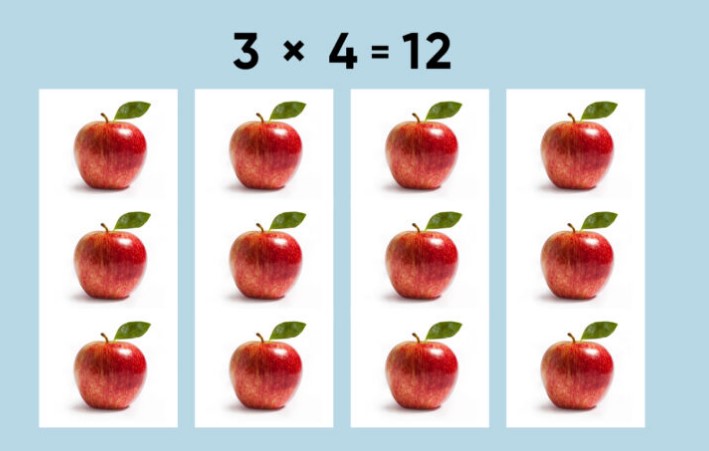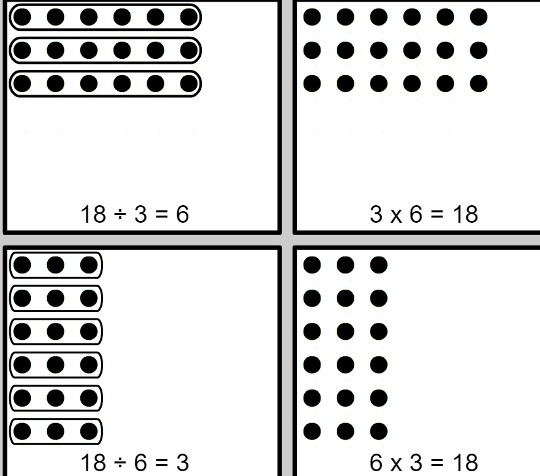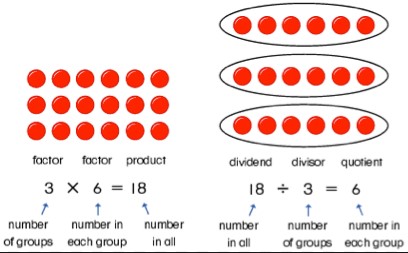The relationship between multiplication and division is a fundamental mathematical concept that is often misunderstood and can be confusing for students. In this blog post, we will explore the connection between these two operations and why they are so closely related. We will also look at the various ways in which multiplication and division are used in everyday life, as well as the implications of understanding this relationship in solving real-world problems.
Historical perspectives: how has the relationship between multiplication and division changed over time

The relationship between multiplication and division has changed drastically throughout history. While it’s always been known that multiplication is the inverse of division, the way they were taught and used has shifted over time.
In Ancient Greece, for example, multiplication was thought of as repeated addition, while division was seen as repeated subtraction. Later, in the Middle Ages, as mathematics evolved and became more sophisticated, multiplication was seen as a form of repeated grouping, while division was viewed as a form of repeated sharing. In more recent times, multiplication has been seen as a way to find a product or total from a given set of factors, while division is viewed as the process of finding how many groups of a given size can be made from a certain total.
Regardless of the way it’s taught, the fundamental relationship between multiplication and division remains the same.
Benefits of understanding the relationship: what are the benefits of understanding the relation between multiplication and division

Having a comprehensive understanding of the relationship between multiplication and division is an invaluable skill for students of all ages. By mastering the connection between the two, students are able to approach math problems with greater confidence and accuracy.
For example, if a student knows that multiplication is the inverse of division, she can use the inverse operation to solve a problem. This is especially helpful for more difficult math problems that require multiple steps.
Additionally, understanding the relationship between multiplication and division helps students gain a better understanding of the basic principles of math. By recognizing the relationship between the two operations, students are able to deepen their understanding of the subject and gain a more holistic view of math.
Understanding the relationship between multiplication and division is also beneficial for students who are looking to pursue a career in mathematics or science. By mastering the connection between the two operations, students can gain a greater appreciation for the underlying principles of mathematics. Ultimately, understanding the relationship between multiplication and division is an important part of becoming a successful math student.
Tips for teaching the relationship: what are some tips for teaching the relationship between multiplication and division
Teaching the relationship between multiplication and division can be a challenging task for teachers. However, with the right approach, it can be an enjoyable and rewarding experience for both the teacher and the student. Here are some tips for teaching the connection between multiplication and division:
Start with repetition and drills. By having students practice and master the basic skills of multiplication and division, they will be better prepared to understand the relationship between the two.
Use visual aids.
This could include objects such as counters, blocks, or grids on whiteboards or paper. By providing a visual representation of the relationship, students can use the visuals to better understand the concepts.
Introduce word problems. By having students apply the skills they have learned to word problems, they can develop a deeper understanding of how multiplication and division are related. Ask questions. Asking questions throughout the lesson can help to reinforce the material and ensure that the student understands the concept. By following these tips, teachers can help their students develop a better understanding of the relationship between multiplication and division.
Examples of the relationship: how can we show examples of the relation between multiplication and division
There is a strong connection between multiplication and division, which is often referred to as the inverse relationship. To put it simply, what you multiply one number by, you can divide another number by to get the same answer.
For example, if you multiply 4 by 3, the answer is 1 This same answer can be achieved by dividing 12 by This relationship between multiplication and division can be seen in many real life situations, such as when you are cooking a recipe or when you are budgeting for a project.
Knowing how to use multiplication and division together can be a powerful tool to help you solve problems quickly and efficiently.
Frequently asked questions: what are the most common questions about the relationship between multiplication and division
When it comes to understanding the relationship between multiplication and division, there is often confusion. However, the two operations are actually closely related.
In fact, they are inverse operations of each other, meaning that what one does, the other undoes. This means that when you multiply two numbers, the product of that multiplication can be divided to get the original numbers. Similarly, when you divide two numbers, the quotient of that division can be multiplied to get the original numbers.
Understanding this relationship can help to make learning multiplication and division more straightforward.
Bottom Line
In conclusion, multiplication and division are two sides of the same coin. They are both operations used to manipulate numbers in order to solve mathematical problems.
While multiplication is a form of repeated addition, division is a form of repeated subtraction. Understanding the relationship between multiplication and division can help students develop a better understanding of mathematics and work more efficiently.

